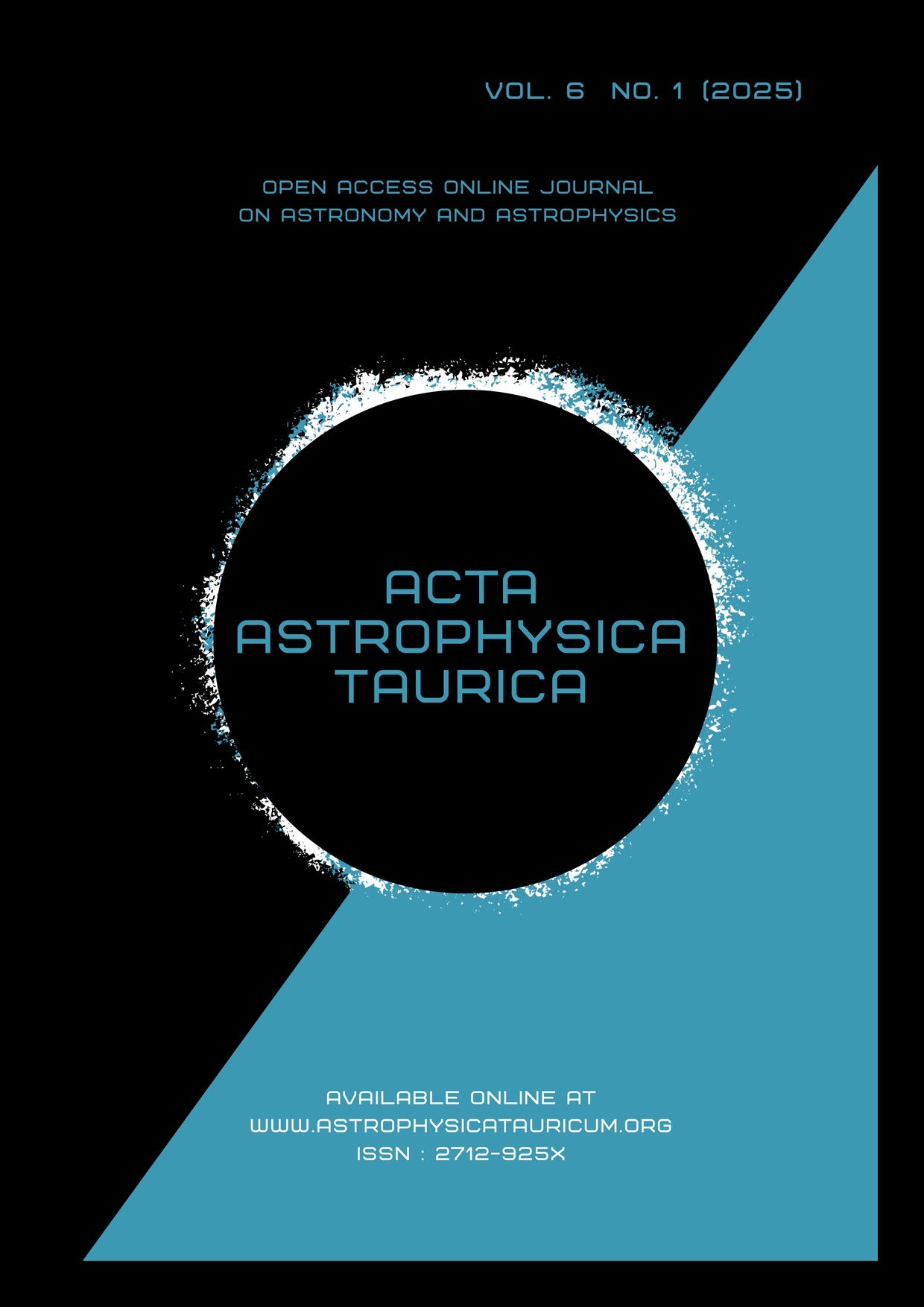Analysis of events during the M 2.5 flare on June 7, 2011
Main Article Content
Abstract
The object under study is the fragments of the falling matter during the M 2.5 flare in the NOAA AR 11226 on June 7, 2011. Observations were carried out with the horizontal solar installation HSFA-2 and the multichannel flare spectrograph MFS (Ondrejov Observatory). The traces of fragments were found in the CaII H, Hα, and Hβ lines. After reducing the line spectra, absorption fluxes were calculated for four moments of time, and a system of equations was solved for the populations of discrete levels and the ionization state of the hydrogen atom and CaII ion. The source of radiation was considered in the approximation of a homogeneous layer of heated gas. The gas parameters were selected in such a way that the observed and theoretical fluxes coincide with an accuracy of better than 5%. Calculations have shown that the temperature range T varies from 7 to 12 thousand K, the column concentration N is 1–5 1019 cm-2, and the turbulent speed varies from 6 to 21 km/s.
Downloads
Article Details

This work is licensed under a Creative Commons Attribution 4.0 International License.
References
Brown J.C., 1971. Solar Phys., vol. 18, p. 489.
Cunto W., Mendoza C., 1992. Rev. Mexicana Astron. Astrofis. vol. 23, p. 107.
Fletcher L. et al., 2011. Space Sci. Rev., vol. 159, p. 19.
Johnson L.C., 1972. Astrophys. J., vol. 174, p. 227.
Krucker S. et al., 2011. Astrophys. J., vol. 739, p. 96.
Melendez M., Bautista M.A., Badnell N.R., 2007. Astron. Astrophys., vol. 469, no. 3, p. 1203.
Seaton M.J., 1964. Planetary Space Sci., vol. 12, pp. 55–74.
Severnyi A.B., 1957. Soviet Astron., vol. 1, p. 668.
Xu Y., Cao W., Jing J., Wang H., 2012. Astrophys. J., vol. 750, p. L7.
Zimovets I.V., Kuznetsov S.A., Struminsky A.B., 2013. Astron. Lett., vol. 39, p. 267.
